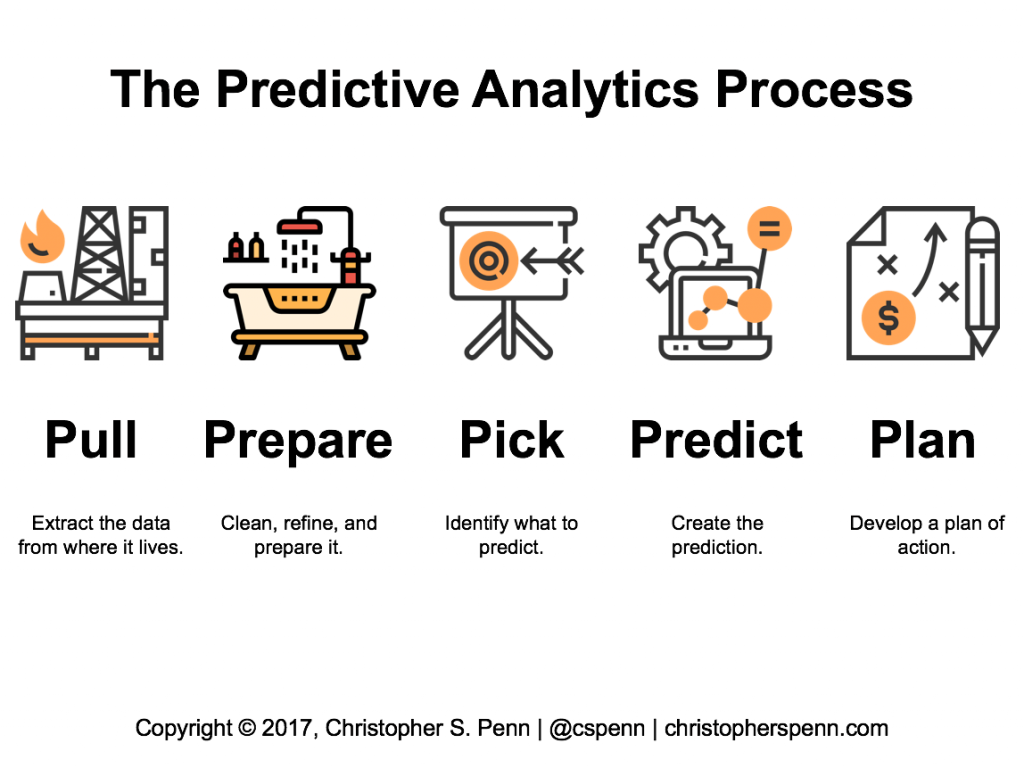You’ve always been the first to enter the conference room. You like to be early. Let others join the meeting when they will. You like to be there first.
Now imagine looking at the whiteboard and reading the following statement:
“Beat your customers, NOT your competitors.”
Does that sound crazy to you?
Well, consider this: Today’s 24×7-online customer doesn’t just think ahead of you, they act ahead of you. Your, the marketer’s, job is no longer to keep up; it’s to keep ahead, wait at the finish line for your customers to reach there.
It’s the difference between having to find and call a customer rep to have a product demonstrated and seeing the rep already stationed at their desk, waiting for you.
That’s what Marketo’s AI-enabled predictive content feature makes possible. You want to be there before the customer, subscriber, or contact gets there. It’s about being relevant. About locking in the exact pattern match.
We’re certified Marketo experts, and we’re going to show you how Marketo’s predictive content can create relevant experiences for your audience across channels.
- Personalizing with Predictive Content in Marketo Engage
- Not cryptic fortune-telling!
- Beyond the basics: Advanced features
- Benefits beyond engagement
- Predictive Content ≠ certainty!
- Prepare to predict, predict to prepare
Personalizing with Predictive Content in Marketo Engage

Image source: Marketo
Marketo Engage, now part of Adobe Marketing Cloud, uses Predictive Content powered by Adobe Sensei to tailor content recommendations. Here’s how it works:
- Content discovery and tagging: Marketo identifies and tags your content for AI-driven recommendations
- Machine learning algorithms: Marketo analyzes user data, clicks, and trends to predict preferences
- Recommendation channels: Marketo displays content via:
- Recommendation bar: Highlights relevant content on your website
- Email marketing: Embeds personalized content in emails

Not cryptic fortune-telling!
Predictive Content in Marketo isn’t just fancy guesswork. It leverages machine learning algorithms that constantly learn and improve.
Christopher Penn, co-founder and chief data scientist at TrustInsights.ai, divides the predictive process into these five steps:
- Pull: Extract data from its source
- Prepare: Clean, refine, and prepare the data
- Pick: Determine what to predict
- Predict: Execute the prediction
- Plan: Develop a data-driven strategy

Marketo’s Predictive Content functions according to a similar archetype. Here’s a peek under the hood:
- Data gathering: Marketo collects various data points about your audience. This includes demographics, website behavior (pages viewed, time spent), email engagement (opens, clicks), and content downloads
- Content analysis: The system analyzes your existing content library. It considers factors like content type (blog post, white paper, video), topic, keywords, and performance metrics (engagement rates, conversions)
- Pattern matching: The algorithms identify patterns between user behavior, content type, and desired outcomes (e.g., downloads, form submissions).
For instance, it might discover that visitors who read a specific blog post about social media marketing are more likely to download a related white paper on choosing the right social media platform for their business - Predictive modeling: Based on the identified patterns, the algorithms create sophisticated predictive models.
These models anticipate which content piece is most likely to resonate with a particular user based on their profile, past interactions, and the current context (e.g., the webpage they are viewing, the keywords they searched for)
Beyond the basics: Advanced features
Marketo’s Predictive Content offers some advanced features to further personalize the experience:
- Dynamic content: You can personalize specific elements within a recommended content piece. For example, the headline, image, or call to action (CTA) could change based on the user’s profile and interests.
Once again, imagine a blog post about social media marketing that displays a CTA to “Download our guide to creating Facebook ads” for users who have shown interest in Facebook marketing, while displaying a CTA to “Learn more about social media strategy” for users who are new to the topic
(Dynamic content and predictive content are two different things. Predictive content is automated and controlled by machine learning while Dynamic Content is set up manually by marketers through rules and segments. Predictive Content offers personalization based on predictive analytics and user behavior; Dynamic Content personalizes content based on predefined criteria and rules)
- A/B testing: You can test different variations of the recommendation bar or email content to see which performs best with your audience. You can test different layouts, headlines, CTAs, and even the content selection algorithm itself. This data-driven approach ensures you are delivering the most effective recommendations possible
- Content categories: You can group your content into categories (e.g., product type, industry, buyer persona) to ensure recommendations stay relevant within specific topics. This is particularly useful for organizations with a large content library that covers a broad range of topics
Benefits beyond engagement
While increased engagement is a key benefit, Predictive Content can also:
1. Streamline the buyer’s journey
By delivering the most relevant content at each stage of the buyer’s journey, you can guide prospects smoothly through the sales funnel.
Picture a prospect who reads a blog post about the challenges of marketing automation. Predictive Content might then recommend a white paper that compares different marketing automation solutions, followed by a case study showcasing how a similar company successfully implemented marketing automation. This targeted content delivery nurtures leads and moves them closer to a buying decision.

2. Optimize content investment
Predictive Content helps you identify which content pieces resonate most with your audience and deliver the best ROI.
By analyzing engagement and conversion metrics associated with recommended content, you can focus your resources on creating high-performing content that drives results. You can also identify content that may be underperforming and revamp it to improve its effectiveness
3. Boost lead nurturing
Predictive Content delivers targeted content that educates and nurtures leads, increasing their chances of converting into customers. By providing content that addresses their specific needs and interests, you can build trust and relationships with potential buyers, ultimately leading to higher conversion rates

Predictive Content ≠ certainty!
Predictive analytics does not guarantee success. The best it can do is “measure potential outcomes.”

There’s a divide between who’s measuring and what’s being measured. Predictive modeling relies on static data to do its job. By “static” we mean a data point that exists within a closed system at any given point in time. That’s the “who’s measuring” part.
But human behavior doesn’t operate in an airtight system. It is given to external, uncontrollable influences. So, what’s being measured is in a flux.
Imagine Marketo’s Predictive Content feature recommended a piece of content to a particular subscriber. The recommendation is based on behavioral data. Sure; Mr. X has been signaling intent for this topic. But what if the same subscriber read an industry report which suddenly changed their perspective on that topic?
What about personal circumstances? Moods? Shifts in work priorities?
There can be any number of such coffee spills to ruin those exact lines on the map. Predictive AI is not a magic bullet; but who needs magic to make things work? You want to make the winning bet to come out on top. And predictive modeling is just that.
Prepare to predict, predict to prepare
We’ll leave you with a few pointers to get started with Predictive Content in Marketo Engage. As a first step, ask yourself these questions:
- Do we have a sufficient amount of good content?
- Which ones are our highest-performing content pieces?
- How do we create categories for our content?
- How many content pieces should we start with?
- How are we going to leverage analytics? What are we measuring?
If you should still feel stuck, you might want to read more on how predictive analytics can transform marketing across channels.
Better still, you can get in touch with our Marketo specialists.







Rudra Tibak
Rudra is the Sr. Campaign Manager at Mavlers, an email marketing maven who turns inbox monotony into marketing magic! With more than 4 years of crafting captivating campaigns, he's adept at concocting clever subject lines and perfecting pixel-perfect templates. Off-duty, he's a sports enthusiast, thriving on the adrenaline rush of a good match. And when the sneakers come off, he dives into spirited debates with wit sharper than Occam's razor.
Susmit Panda
A realist at heart and an idealist at head, Susmit is a content writer at Email Uplers. He has been in the digital marketing industry for half a decade. When not writing, he can be seen squinting at his Kindle, awestruck.
Figma AI: An Overview of the Latest Features
A Complete Guide to Create Your Own HTML Email